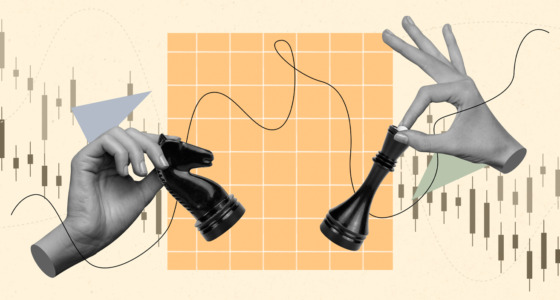

There are numerous financial markets, including Forex, stocks, commodities, cryptocurrency, etc. When you enter any of them, you should know how the market works and the major factors that affect the assets. This information will help you to get the most out of the market.
However, that’s not all. Investors shouldn’t mitigate risk management. Financial risks are even controlled at the state level. For instance, the US SEC requires publicly traded companies to uncover their exposure to financial risk. Before investing in a company, any investor can access information about material factors that can make an investment speculative or risky.
Let’s consider the major risk management rules.
What is market risk?
Let’s start with the basics. Maybe you already know what the market risk is. However, it’s always good to repeat.
Market risk is the possibility that you will bear losses due to the factors that impact the overall market performance. The risk always exists because all markets are affected by numerous factors that can change rapidly. Therefore, it’s impossible to make a 100% accurate investment decision.
Although it’s impossible to avoid market risk, you can lower it by applying risk management rules.
Risk management is a tactic that helps investors to identify, analyze, and accept or mitigate uncertainty in investment decisions.
1. Analyze investment risk
Before you decide how much you can risk, you should analyze your goals and current position to define your risk tolerance.
Just to remind: Risk tolerance is the ability to accept the outcomes of a risk in case they occur and the availability of resources to absorb or tolerate the given outcomes. Usually, risk tolerance is divided into three categories: aggressive, moderate, and conservative.
It’s complicated to define what risk tolerance you have. However, there are various software programs that will define your attitude to risk based on answers to a questionnaire. Such programs can also define whether your current portfolio matches up to your risk tolerance. If not, you can realign existing assets.
2. Allocate assets in the long term
This tactic is about viewing the portfolio of instruments as a whole without focusing on individual assets. This means that when considering an asset, you shouldn’t think about how profitable this investment may be. You should consider how this investment will correlate with other financial instruments in your portfolio.
Another important idea of this risk management tool is that you should diversify your portfolio with various assets. Don’t focus on one market and learn about different markets. Even if you have prejudices that the bond market is too conservative while the cryptocurrency market is too volatile and risky, you should define the assets that will match your risk tolerance and goals. Remember that the assets of your portfolio should hedge your funds. It means that they should be negatively correlated. Thus, when one asset class depreciates, another one will cover those losses. Don’t be too conservative investing in stocks only. There are many asset classes that you can invest in.
The next important point of the asset-allocation strategy is that you should invest your funds proportionally; don’t put most of your funds in one asset class. If one asset class plunges, another one will appreciate. Thus, the amount you may lose should equal the amount you may gain.

3. Invest consistently

Professional investors recommend using the dollar-cost averaging strategy. It focuses on long-term investments.
The idea is simple: you should add the same amount to your investment account at regular intervals. Choose the amount and periods you are comfortable with.
This strategy is simple and will relieve you of unnecessary stress. It makes you disciplined. When you are used to investing the same amount at certain intervals, you don’t notice these expenses. The strategy allows you to mitigate market volatility and build a significant investment portfolio.
4. Define your own risk/reward ratio
There is a common rule that your possible returns should be at least two times larger than a possible loss (1:2 risk/reward ratio). Investors should define the maximum divergence between the expected price and one that can be reached over a certain period of time if the forecast is incorrect.
This approach allows investors to control the maximum amount they can lose in case the market turns in the opposite direction and their investment forecast is wrong. Even if an investor loses a certain amount, they won’t be taken off the market. The loss won’t affect the overall investor’s performance.
However, you should remember that the 1:2 risk/reward ratio is just a basic rule. To evaluate the risk you can afford, you should consider how volatile the asset is, how the loss can affect your capital, and the amount of funds you have to stay afloat.
5. Lower portfolio volatility
Volatility can be low or high, but it always exists. Thus, investors should know how to deal with it. One of the strategies recommends lowering portfolio volatility through cash or cash equivalents, including certificates of deposit, US Treasury securities, and money market funds. It means that investors should allocate some funds to these instruments to avoid selling other assets if they need additional funds to cover losses.
The percentage of funds allocated to cash instruments depends on an investor’s strategy. Remember that it’s not recommended to keep a lot of funds in cash due to inflation.
Final thoughts
When you enter any financial market, you should follow the basic rules mentioned above. They apply to all markets and asset classes. These rules will discipline you and allow lowering the risks that every market bears. Remember that profits go hand-in-hand with risks, and you should follow the market laws to get the most out of the market.







